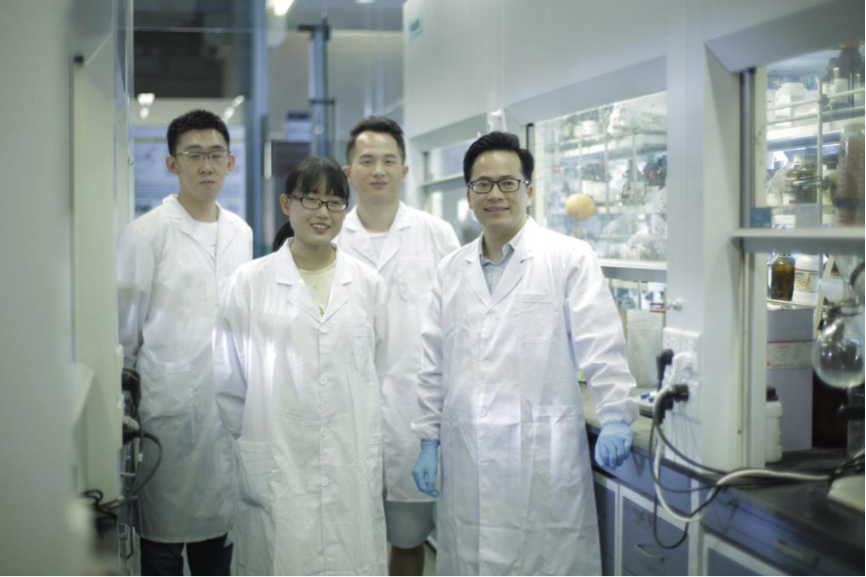SUSTech research group synthesized important natural product
2019-02-14
Sesterterpenoids, a rare type of terpene that is produced from a variety of plants and insects, have been the source of much research around the world and play an important role in synthetic organic chemistry and drug discovery.

Cerorubenic acid-III, an importance sesterterpenoid in insect communications, was first discovered from the secretions of the red wax scale by the research group of Japanese scientist Naya in 1983. Its relative scarcity from natural sources limited further study on it. World-famous synthetic chemist Professor Leo Paquette has spent more than 10 years researching cerorubenic acid-III and tried a variety of synthesizing strategies, which resulted a synthesis of cerorubenic acid-III methyl ester. However, the total synthesis of Cerorubenic acid-III had not previously been reported. Thus, the first total synthesis of cerorubenic acid-III is undoubtedly of great significance.
What’s more, cerorubenic acid-III has a highly unusual structure that is highly reactive and unstable in air that oxidizes into a different form. As a result, synthesizing it becomes a formidable challenge.
Southern University of Science and Technology (SUSTech) Department of Chemistry Professor Li Chuangchuang led a research team in conjunction with the Academy for Advanced Interdisciplinary Studies, the Shenzhen Grubbs Institute and the University of Macau to study the asymmetric total synthesis of cerorubenic acid-III. The research team has developed an effective method toward the total synthesis of cerorubenic acid-III in only 19 steps. Their paper was published in the Journal of the American Chemical Society (JACS) on February 5th.
The co-first authors were SUSTech doctoral student Liu Xin (also from the University of Macau) and assistant professor of research of the Academy of Advanced Interdisciplinary Studies Liu Junyang. Doctoral student Wu Jianlei and research assistant Huang Guocheng also made important contributions to the paper. Department of Chemistry Associate Professor Chung Lungwa and undergraduate student Liang Rong completed important computational chemistry work. Professor Li Chuangchuang was the only correspondent author of this paper, and SUSTech is the first communication unit.
Li Chuangchuang’s research group has been devoted to the development of innovative synthetic methods and the total synthesis of complex active natural products. By focusing on basic scientific issues in synthetic organic chemistry, the group has actively explored and developed original methodologies for the first total synthesis of complex active natural products.
“With the synthesis of biologically active natural products at the core of our research and drug research guiding us, the team has fully developed and applied new strategies and technologies of modern organic synthesis to construct a natural product bank quickly, efficiently and diversity, from which new drug molecules or lead compounds can be found.”
The research group is planning to continue studying this area and will report further on this area.
This work was supported by the Natural Science Foundation of China (grant nos. 21602100, 21522204, and 21472081), the Guangdong Science and Technology Department (2016A050503011), the Shenzhen Science and Technology Innovation Committee (grant nos. JCYJ20170817110130636, JCYJ20170412152454807, and JSGG20160301103446375), and the Shenzhen Nobel Prize Scientists Laboratory Project (C17213101) and Project KQTD2016053117035204 supported by Shenzhen Peacock Plan.
Original paper: https://pubs.acs.org.ccindex.cn/doi/10.1021/jacs.8b12647




